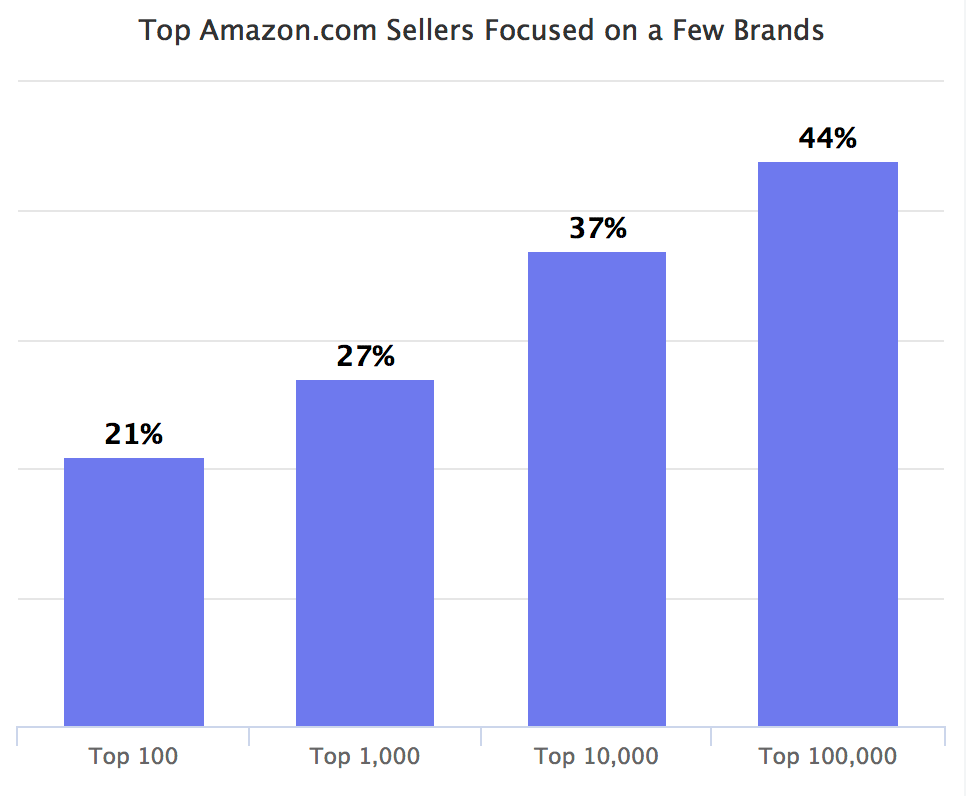A minor misconception about marketplaces is that sellers are contempt with its model. Instead sellers are spending increasing effort to avoid the “marketplace” by making their own products, private labeling, entering into exclusive deals with manufacturers, etc. all to avoid having competition. In Brands Shouldn’t Fear Amazon, The Threat Is Millions of Marketplace Sellers we wrote:
“Many assume that marketplace sellers are happily competing on selling products sourced from manufacturers and distributors. But as they are doing that every single one of them is thinking about how to avoid it. And as it happens, making private label products is just the solution.”

We found that 21 of the top 100 sellers are selling their own brands only. This encapsulates both private label sellers, and manufacturers selling themselves, but the difference between those two is disappearing so we are not making a distinction.
27 percent of the top 1,000 sellers, 37 percent of the top 10,000 sellers, and 44 percent of the top 100,000 sellers are selling 3 brands or less.
It is immediately obvious from these figures that the very top sellers are mostly carrying many brands. But deeper in the sellers list the number of sellers with just a few brands starts to increase. The 44 percent out of the top 100,000 sellers is almost a half, and it showcases how smaller sellers focus.
This doesn’t mean that all of those sellers are doing private labeling, as many of them are manufacturers selling their own products, or new sellers without the capital to carry many brands.
Some categories like Electronics have a few domestic distributors with access to every product out there. Yet sellers realized that if everyone is sourcing from the same company there isn’t much they can do to win the buy box, outside of driving down the margin. As much as there is talk about ways to optimize and win demand, by utilizing reviews, ads, and other techniques, controlling supply is more important.
The average number of sellers per brand will continue to drop. We see a trend in the market of brands selling their own products, and sellers inventing their own brands. And for the bigger brands control is achieved either through brand gating or selling directly to Amazon.
Although in Private Label and the Future of Marketplaces we wrote:
“The rise of competition-less products has brought new problems. The key one being saturation of marketplaces with very similar, but just-a-bit different products. Most private label products are almost identical to competition. Thus the competition moved to SEO optimization, keyword ranking, product reviews buying, etc. All in an attempt to rank the product higher.”
Time will tell how Amazon will evolve to deal with a growing number of similar products.

